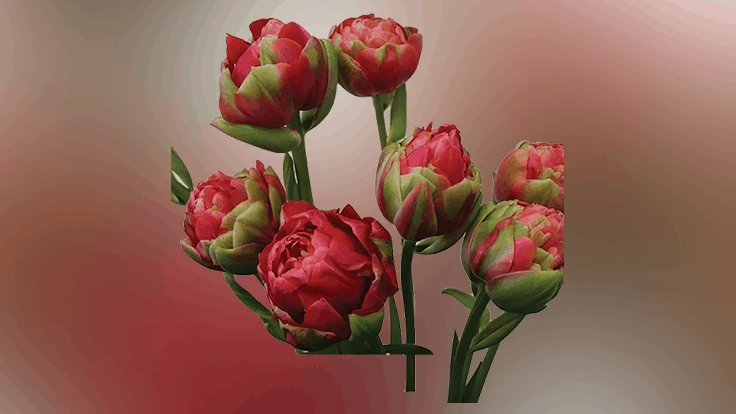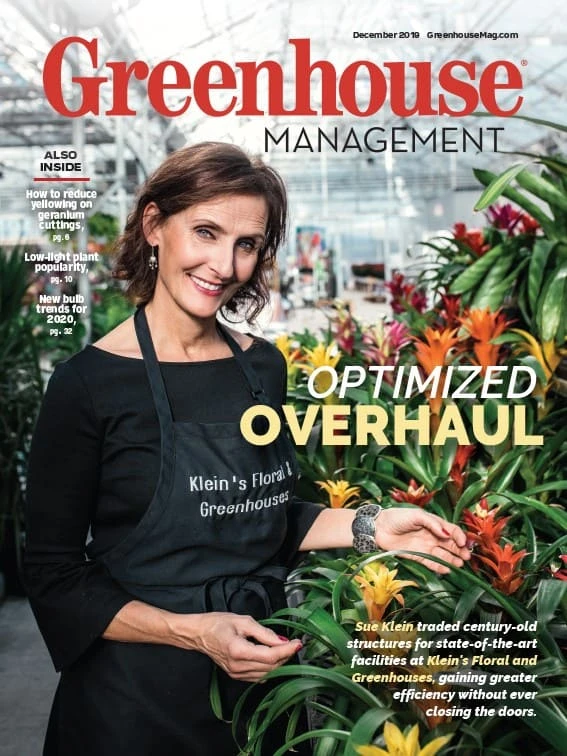

From snow-white roselilies to ‘Black Hero’ tulips and every shade of unusual variety in between, the bulbs being grown today are not your grandmother’s flower bulbs. With more options and innovations on the market, bulb sales are taking off.
“Across the board, bulb sales are increasing,” says Marjolein Berbee-Dzmura, co-owner of Leo Berbee Bulb Company in Columbus, Ohio. “Our garden center is having record-breaking bulb sales and our [wholesale] customers are saying the same thing. We’ve only heard positive news — people increasing their orders and asking to get bulbs earlier.”
To capitalize on this boom in 2020 and beyond, growers should pay attention to these four bulb trends that are taking over the market.




New, different and unique
Berbee-Dzmura says social media is driving bulb popularity, as it has for houseplants.
“Everybody wants something unusual and unique that they can’t get somewhere else,” she says. “Everybody wants something they can share on social media to say, ‘Look what I have.’”
This demand is pushing breeders to hybridize new varieties — shaking up the expected red tulips and pastel lilies to offer new options.
“People are going after the parrots, doubles and fringes, not the standard varieties you can get anywhere,” Berbee-Dzmura says.
“The doubles trend is definitely picking up,” says Martin Meskers, AAF, president and owner of Oregon Flowers, which sells to wholesale florists and specialty supermarkets across the country. “The first doubles that came out had a few issues but the varieties are getting better every year.”
Now, instead of sticking to classic categories — like Oriental, Asiatic, trumpet or longiflorum (Easter) lilies — the lines between varieties are starting to blur.
“These groups are getting mixed up because they’re being hybridized together,” Meskers says. “Now you have OT, which is a mix of an Oriental lily and a trumpet, and you have LO, which is a longiflorum crossed with an Oriental, and then Asiatics are being bred with longiflorums so you have LA — and they’re even cross-hybridizing those, so it gives us a lot more varieties.”
Color play
Bulb hybridization has unlocked a spectrum of new color possibilities.
“Instead of just having white and pink Orientals, now we can get peach, yellow and other colors,” Meskers says. “Tiger lilies used to be heavy in orange and yellow, and now we can get whites, pinks and even two-tones. Even hyacinths used to be pretty much blue, white and pink, and now we see peach, yellow and purple.”
“Purple was the hot color for 2019,” Berbee-Dzmura says, noting unusually dark varieties like the nearly black “Queen of Night” tulip and “Black Hero” parrot.
Shades of salmon and apricot have also been popular, thanks to Pantone’s selection of coral as the color of the year.
“It’s difficult to adjust to color demands, especially if it’s something like peach that isn’t readily available in lilies, because we have to purchase our bulbs at least a year or two ahead of time,” Meskers says. “That will always be a challenge.”
Regardless of the color trends that emerge in 2020, growers can generally rely on holidays to inform selection. Obviously, red and white rule during Christmas, with pink joining the mix in time for Valentine’s, and then a wider palette of pastels to celebrate Mother’s Day.
In general, colors “get darker as the season goes on,” Berbee-Dzmura says. “It starts light — the first blooming flower is a white Galanthus snowdrop — and it works its way up to the latest-blooming bulb, allium, which is purple.”




Cultural adaptation
Hybridization isn’t just about getting different bulb colors, but breeding better growing traits.
“Sometimes that means a stronger stem, better bud count, longer-lasting blooms or more disease resistance,” Meskers says. “It might be a nice color, but if it’s not holding up by the time the end consumer gets it, then it just doesn’t work.”
For cut flower growers like Oregon Flowers, stem strength and length are key characteristics. But potted plant growers are benefitting from more compact growth traits hitting the market.
“Over the years, they’ve been hybridizing more varieties for the potted culture,” Meskers says. “Now we have more varieties that are genetically short, so that’s a big advantage for potted growers.”
Bulb hybridization has unlocked a spectrum of new color possibilities.
Perhaps the most important trait is timing, as growers look to force bulbs earlier and extend the growing season.
“Some say the first sign of spring is seeing a flower bulb bloom, so getting an early crop [is important,]” Berbee-Dzmura says. “We do pre-cooling here, so customers will have Valentine’s Day flowers in early March because they want to have them before anybody else.”
This has led to more growers in Holland forcing tulip bulbs hydroponically to accelerate the process. The bulbs sit in special drainage trays that prevent overwatering and promote even cooling. Berbee uses hydroponics to force amaryllis blooms, “and it’s fantastic,” Berbee-Dzmura says. “I’m able to fit 15 bulbs on a tray versus potting them in containers, so I’m saving on the pots and I’m saving space.”
Assorted options
Despite the spectrum of bulb options available, Leo Berbee Bulb Company still plants standard red and yellow tulips in front of its store to draw traffic, and those classics continue to outsell unique newcomers.
Keeping up with bulb trends isn’t about abandoning the time-tested favorites; it’s about expanding your assortment as the options explode.
“You’re always going to sell the most of your yellow and red tulips — at least we always have — but bring in more unusual varieties. Try to offer something different,” Berbee-Dzmura says.
Berbee offers about 120 varieties of tulips in the U.S., with an expanded collection of more than 600 at their family’s facility in Holland, where they make special orders. Oregon Flowers offers about 60 varieties of tulips and 80 varieties of lilies, in addition to hyacinths and outdoor crops like peonies and hydrangea.
The challenge for bulb growers is navigating new varieties as trends shift at the speed of social media.
“Customers are getting more demanding, so we have to have more varieties, a better assortment and consistent quality,” Meskers says. “None of us can say, ‘Well, I’ve been growing this crop for the last 10 years, so I’m going to keep growing it for the next 10 years.’ Everything gets renewed so we have to keep up to date, try new varieties and listen to our customers.”

Explore the December 2019 Issue
Check out more from this issue and find your next story to read.
Latest from Greenhouse Management
- Anthura acquires Bromelia assets from Corn. Bak in Netherlands
- Top 10 stories for National Poinsettia Day
- Langendoen Mechanical hosts open house to showcase new greenhouse build
- Conor Foy joins EHR's national sales team
- Pantone announces its 2026 Color of the Year
- Syngenta granted federal registration for Trefinti nematicide/fungicide in ornamental market
- A legacy of influence
- HILA 2025 video highlights: John Gaydos of Proven Winners





